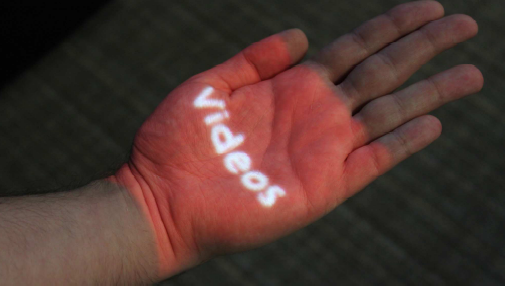Surface computing + augmented reality = Microsoft LightSpace

Microsoft is looking to extend its surface-computing work into the spatial-computing arena with a new research project known as LightSpace.

LightSpace uses multiple depth cameras and projectors to allow users to transfer objects between touch surfaces. The cameras make it appear that users are carrying projected objects in their hands and then "dropping" them onto walls, where they can be manipulated using multitouch gestures similar to those used with the Microsoft Surface tabletop.
"Depth cameras (such as those from PrimeSense1, 3DV, and Canesta) are able to directly sense range to the nearest physical surface at each pixel location. They are unique in that they enable inexpensive real time 3D modeling of surface geometry, making some traditionally difficult computer vision problems easier. For example, with a depth camera it is trivial to composite a false background in a video conferencing application. Microsoft’s Kinect device builds on PrimeSense technology and computes a skeletal model of a player for motion-driven gaming. While such cameras are now rare, the release of Kinect is likely to make depth cameras inexpensive and widely available."
LightSpace attempts to further the notion that "the room is the computer." (So much for "the network is the computer.") It also points to a future where all physical surfaces become interactive displays -- including the user's body.
Microsoft has been looking for ways to extend its Surface technology. A couple of years ago, Microsoft researchers showed off a spherical Suface. In 2009, they demonstrated another Surface spinoff known as "SecondLight," a rear projection-vision surface technology that allowed users to project through and beyond the display. (By the way, for you codename hounds, the Bing Maps on Silverlight project at Microsoft happened to be codenamed "FirstLight.")
(Thanks to Microsoft Student Partner Pradeep for the pointer to the LightSpace page.)